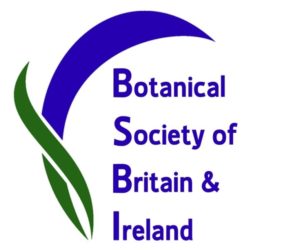Kirkcudbrightshire Botany Group, Mabie Forest 1 June 2019
The field meetings this year just get better and better with rare or scarce plants recorded – the Nationally Scarce Carex elongata last meeting, and now this is surpassed and was enjoyed by 7 of us. Even the weather was better behaved than that forecast…
Mabie Forest, although owned and managed by the Forestry Commission, is about 50% mature deciduous woodland with a variety of habitats besides woodland – including a loch, several ponds, marshy areas, grassland, forest rides and glades, all over soils varying from acidic to virtually neutral, dry to damp/wet.
Several ancient woodland indicator species were recorded in the first half hour or so, with Dog’s Mercury Mercurialis perennis, Common Enchanter’s Nightshade Circaea lutetiana, Wood Speedwell Veronica montana (hairs all round the stem), Yellow Pimpernel Lysimachia nemorum, Wood Melic Melica uniflora, Wood Sedge Carex sylvatica, Remote Sedge C. remota, Giant Fescue Schedonurus gigantea (with purple auricles clasping the stem), Sweet Woodruff Galium odoratum, Hairy Wood-rush Luzula pilosa, Beech Fern Phegopteris connectilis (with the lowest two pinnae pointing backwards) and Hard Shield Fern Polystichum aculeatum.
Quite apart from other species not exclusively associated with woodland – Bluebell Hyacinthoides non-scripta, some still in flower, Wood Anemone Anemone nemorosa, Greater Wood-rush Luzula sylvatica and Wood Sorrel Oxalis acetosella. Even the odd Primrose Primula vulgaris was still in flower. We recorded both Avens: Wood Avens Geum urbanum with its small upright yellow flowers, and Water Avens G. rivale with purplish large nodding flowers, and finally the hybrid G. x intermedium of large yellow drooping flowers.
There was a wide variety of trees, both deciduous and coniferous, and shrubs (several obviously planted) including hybrid Whitebeam Sorbus x thuringiaca.
Other highlights included two Lady’s Mantles, Smooth Lady’s Mantle Alchemilla glabra with no hairs anywhere on the plant and A. xanthochlora with sparse hairs on the under-surface of the leaves. Sedges were scattered around with the two mentioned above, plus Carnation Sedge Carex panicea (both leaf surfaces glaucous); Glaucous Sedge C. flacca (upper leaf surface green, under-surface glaucous); Star Sedge C. echinata with fine leaves and widely spaced spikes; Common Yellow Sedge C. demissa; and in and around the loch/pools Bottle Sedge C. rostrata (dark grey-green leaves), Smooth-stalked Sedge C. laevigata and Slender Sedge C. lasiocarpa (a very fine-leaved plant). Of the two sedges I brought home to identify, one of them was the Tawny Sedge C. hostiana and I quote, to show the variable nature of the site:
“a plant of wet flushes and marshy ground where the water contains a fairly high proportion of bases and has a pH of 5.5-6.5”
Both the loch and pools contained pondweeds: either Bog Pondweed Potamogeton polygonifolius or Broad-leaved Pondweed P. natans, amongst the duckweed Lemna minor, Water Horsetail Equisetum fluviatile, with its hollow stem and White Water Lily Nymphaea alba. Jim and Iain hauled out a mass of a Stonewort which turned out to be Nitella flexilis. Unfortunately in one of the man-made pools we came across Curly Pondweed Lagarosyphon majus which is an invasive water weed, while around the edge there was garden Hemerocallis and purple-flowered garden Iris.
But the highlight of the day was undoubtedly the re-finding of the previously reported, by Peter Robinson two weeks earlier, Bird’s-nest Orchid Neottia nidus-avis, the last and only record being in 1848 from somewhere close by.
This was the first recent record for the whole of Dumfries & Galloway, at least until I got home when I found an email from Chris Miles forwarding another email from a Gatehouse resident with photo and location details of the same species near Creetown in 2017 and 2018! So two recent records in the last 3 years after an apparent absence of 170 years! It’s a saprophyte (derives its energy from dead and decaying material) with no chlorophyll. Fortunately for us, it was right next to a marker post for one of the forest trails.
What better place to relocate it…..and this almost at the end of our day out.
What a day! The tally was 173 species in two monads of one tetrad and 92 in a monad of an adjoining tetrad, making a total of 198 species during the day. If I tried to list or describe all we’d seen, then this missive would have formed a small booklet. Sorry if I’ve missed out some of the species or photos you may have individually preferred but the file would be too big otherwise.
David Hawker
BSBI county recorder for Kirkcudbrightshire VC73

